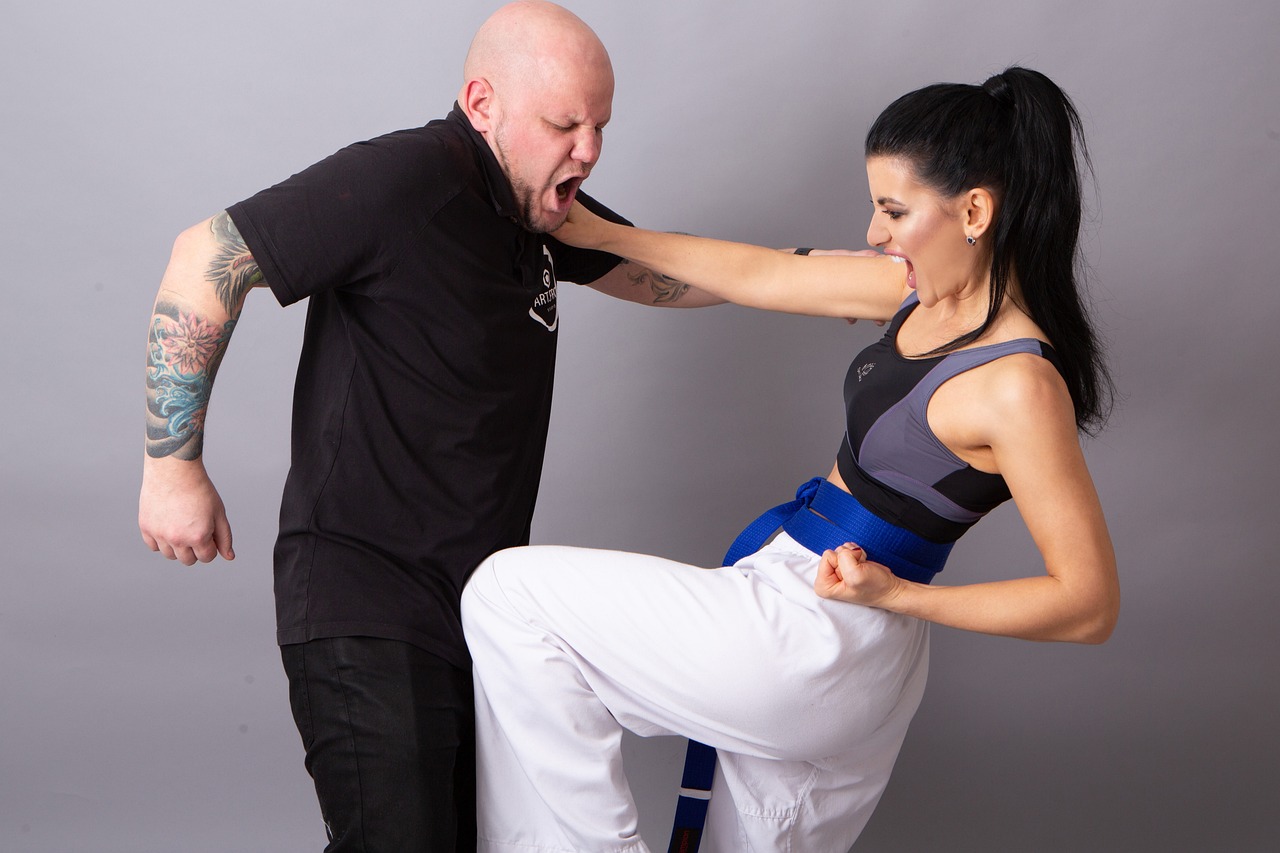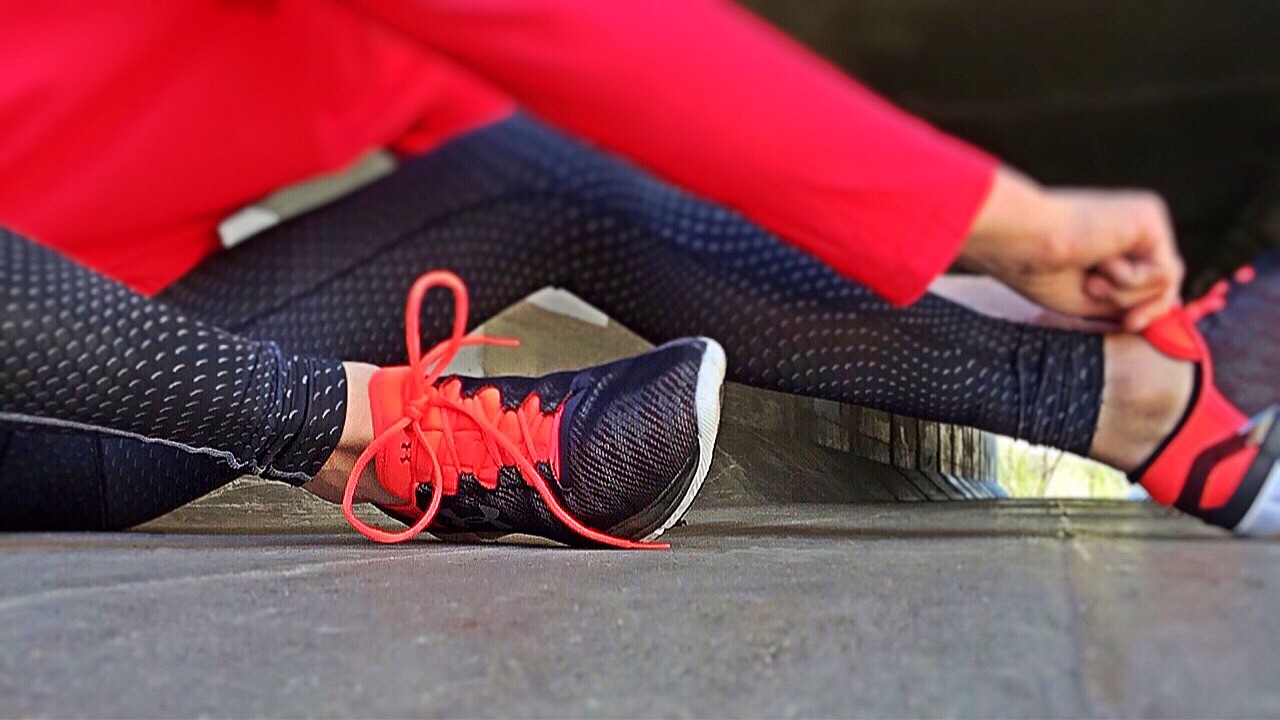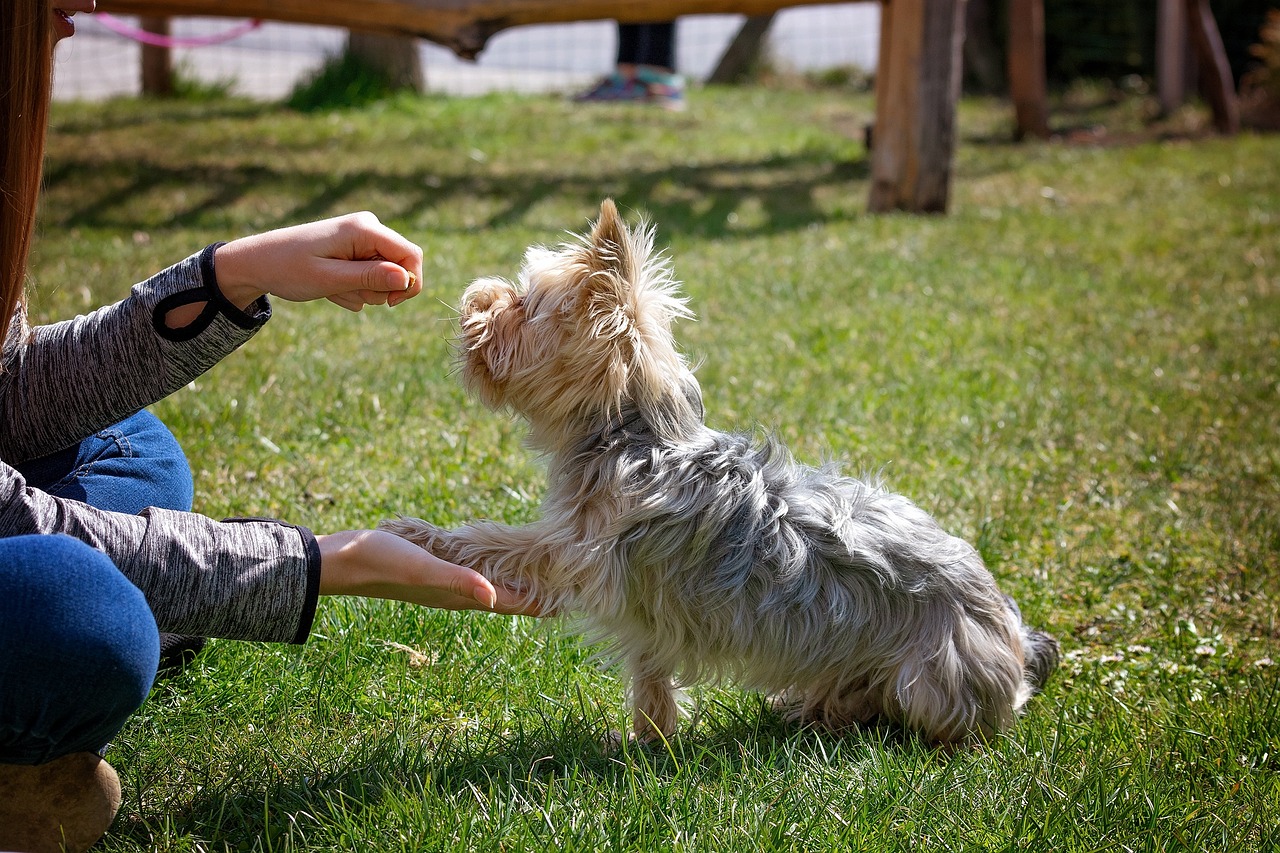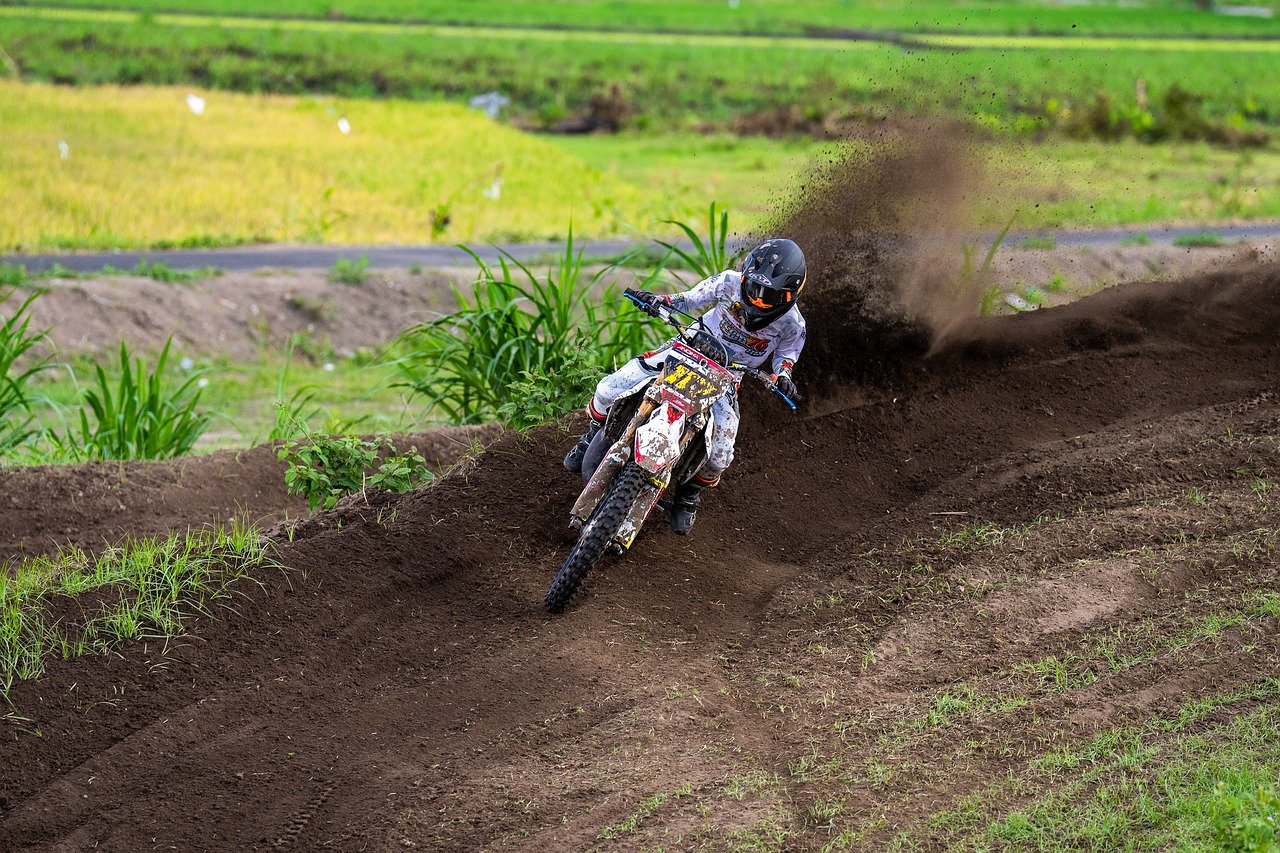Three Key Pillars of Your Self-Defense Training Routine
When it comes to personal safety, understanding the three key pillars of self-defense training is essential. These pillars—physical fitness, mental preparedness, and practical techniques—form the foundation of an effective self-defense routine. Just like a sturdy building needs a solid foundation, your self-defense skills require a well-rounded approach to truly empower you in times of need. This article will delve into each of these pillars, providing you with insights and tips to enhance your self-defense training.
First and foremost, let's talk about physical fitness. It's no secret that being in good shape plays a crucial role in self-defense. Think of your body as a finely tuned machine; the better you maintain it, the more efficiently it will perform when called upon. Regular exercise not only builds strength, agility, and endurance but also significantly boosts your confidence and overall health. Imagine facing an attacker—your physical fitness could be the difference between escaping safely and being caught off guard.
To enhance your physical fitness for self-defense, consider incorporating the following into your routine:
- Cardio workouts: Activities like running, cycling, or swimming improve your stamina.
- Strength training: Lifting weights or doing bodyweight exercises builds muscle.
- Flexibility exercises: Yoga or stretching can improve your agility and reduce injury risk.
Next up is mental preparedness. This pillar is often overlooked but is just as important as physical training. In self-defense, your mind needs to be as sharp as your body. Think of it as the software that runs your hardware—without it, your physical skills may not be utilized effectively. Mental preparedness involves developing situational awareness and quick decision-making skills. Training your mind helps you remain calm under pressure, allowing you to respond effectively to threats.
Developing situational awareness is akin to having a sixth sense. It enables you to identify potential dangers early, giving you the upper hand. By being aware of your surroundings, you can significantly reduce the risk of confrontation. You might ask, "How can I improve my situational awareness?" Here are some tips:
- Always be aware of your surroundings—notice exits, potential threats, and anything unusual.
- Trust your instincts; if something feels off, it probably is.
- Practice mindfulness techniques to enhance your focus and awareness.
Learning to recognize threats involves understanding body language and environmental cues. This skill empowers you to avoid dangerous situations before they escalate. For instance, if you notice someone acting suspiciously, you can take measures to distance yourself from that person. It’s like reading the signs on a road; if you can interpret them correctly, you can navigate safely.
Effective stress management techniques, such as breathing exercises, can help maintain composure during high-pressure situations. Staying calm is essential for making rational decisions when faced with threats. Just think of a time when you panicked—how did that affect your choices? By practicing stress management, you can learn to keep your cool when it counts the most.
Improving decision-making skills is critical in self-defense scenarios. Training in this area prepares you to evaluate situations quickly and choose the best course of action. Imagine being confronted by an attacker; the ability to make a quick decision could mean the difference between safety and danger.
Finally, we arrive at the third pillar: practical techniques. These techniques are the foundation of any self-defense routine. Learning effective moves and strategies enhances your ability to protect yourself in real-life situations. Just as a musician practices their scales, you need to master self-defense moves to ensure they become second nature.
Mastering essential self-defense moves, such as strikes and escapes, equips you with the tools needed to fend off attackers. Regular practice ensures these techniques become second nature. Think of it like riding a bike; once you learn, you never forget. The more you practice, the more instinctive your reactions become.
Engaging in scenario training allows you to practice your skills in realistic situations. This hands-on approach builds confidence and prepares you for potential confrontations. Just as a firefighter trains for emergencies, you can simulate various scenarios to prepare for real-life encounters. It’s not just about learning techniques; it’s about applying them under pressure.
Q: How often should I train for self-defense?
A: Ideally, you should train at least 2-3 times a week to maintain your skills and fitness level.
Q: Can anyone learn self-defense?
A: Yes! Self-defense is for everyone, regardless of age, size, or fitness level. The key is finding a program that suits your needs.
Q: What if I’m not physically fit?
A: You can start at your own pace. Focus on building your fitness gradually while learning self-defense techniques.
Q: Is mental preparedness really that important?
A: Absolutely! Many confrontations can be avoided or de-escalated with the right mindset and awareness.

Physical Fitness
This article explores the essential components of an effective self-defense training routine, focusing on physical fitness, mental preparedness, and practical techniques to ensure comprehensive personal safety.
When it comes to self-defense, is not just an option; it's a necessity. Imagine facing an attacker without the strength or agility to defend yourself. It’s like trying to outrun a cheetah while being weighed down by heavy chains. Regular exercise plays a pivotal role in enhancing your strength, agility, and endurance, which are all crucial for effectively handling physical confrontations. Moreover, being physically fit doesn't just prepare your body; it also significantly boosts your confidence and overall health.
Engaging in a well-rounded fitness routine can include various activities that not only build muscle but also improve cardiovascular health. For example, a combination of strength training, cardio workouts, and flexibility exercises can create a solid fitness foundation. Here’s a quick breakdown of how these components contribute to your self-defense capabilities:
| Fitness Component | Benefits for Self-Defense |
|---|---|
| Strength Training | Increases muscle power for effective strikes and holds. |
| Cardiovascular Training | Enhances stamina, allowing you to escape or fight longer if necessary. |
| Flexibility Exercises | Improves range of motion, making it easier to dodge or maneuver during an attack. |
Incorporating these elements into your routine doesn't have to be daunting. You can start small by setting achievable fitness goals. For instance, aim to work out at least three times a week. As you progress, you can gradually increase the intensity and frequency of your workouts. Remember, the key is consistency. Just like building a house, you need a strong foundation to support everything else. Your body is no different; the more you invest in your physical fitness, the better prepared you'll be in a self-defense situation.
Additionally, consider activities that mimic real-life scenarios. For instance, martial arts classes can provide an excellent blend of fitness and practical self-defense training. Not only will you improve your physical condition, but you'll also learn valuable techniques that can be applied in real situations. So, whether it's hitting the gym, practicing yoga, or enrolling in a self-defense class, make it a priority to stay active.
In conclusion, the importance of physical fitness in self-defense training cannot be overstated. It empowers you to face potential threats head-on, increases your confidence, and enhances your overall quality of life. So, lace up those sneakers and get moving; your future self will thank you!
Mental preparedness is vital in self-defense, involving situational awareness and quick decision-making. Training the mind helps individuals remain calm under pressure and respond effectively to threats.
Developing situational awareness enables individuals to identify potential dangers early. This proactive approach can significantly reduce the risk of confrontation and enhance personal safety.
Learning to recognize threats involves understanding body language and environmental cues. This skill can empower individuals to avoid dangerous situations before they escalate.
Effective stress management techniques, such as breathing exercises, can help maintain composure during high-pressure situations. Staying calm is essential for making rational decisions when faced with threats.
Improving decision-making skills is critical in self-defense scenarios. Training in this area prepares individuals to evaluate situations quickly and choose the best course of action.
Practical techniques are the foundation of any self-defense routine. Learning effective moves and strategies enhances an individual's ability to protect themselves in real-life situations.
Mastering essential self-defense moves, such as strikes and escapes, equips individuals with the tools needed to fend off attackers. Regular practice ensures these techniques become second nature.
Engaging in scenario training allows individuals to practice their skills in realistic situations. This hands-on approach builds confidence and prepares them for potential confrontations.
- What is the best exercise for self-defense?
There isn't a one-size-fits-all answer, but a combination of strength training, cardio, and martial arts can be highly effective.
- How often should I train for self-defense?
Ideally, aim for at least three times a week to build your skills and fitness level.
- Can self-defense training help with confidence?
Absolutely! Physical fitness and mastering self-defense techniques can significantly boost your self-confidence.

Mental Preparedness
This article explores the essential components of an effective self-defense training routine, focusing on physical fitness, mental preparedness, and practical techniques to ensure comprehensive personal safety.
Physical fitness is crucial for self-defense, enhancing strength, agility, and endurance. Regular exercise not only prepares the body for physical confrontations but also boosts confidence and overall health.
Mental preparedness is vital in self-defense, involving situational awareness and quick decision-making. Training the mind helps individuals remain calm under pressure and respond effectively to threats. Imagine being in a high-stress situation; your mind can either become your best ally or your worst enemy. By honing your mental skills, you create a strong fortress that can withstand the chaos of unexpected confrontations.
Developing situational awareness enables individuals to identify potential dangers early. This proactive approach can significantly reduce the risk of confrontation and enhance personal safety. Think of it as having a sixth sense; the more attuned you are to your environment, the better equipped you are to avoid danger. Situational awareness involves:
- Being aware of your surroundings
- Noticing unusual behavior in others
- Understanding the layout of your environment
By cultivating this awareness, you can spot threats before they escalate, allowing you to take action or escape before a situation becomes dangerous.
Learning to recognize threats involves understanding body language and environmental cues. This skill can empower individuals to avoid dangerous situations before they escalate. For instance, if someone is acting suspiciously, their body language may give off red flags. By learning to read these signals, you can make informed decisions about your safety. It's like being a detective in your own life, piecing together clues that could lead to your protection.
Effective stress management techniques, such as breathing exercises, can help maintain composure during high-pressure situations. Staying calm is essential for making rational decisions when faced with threats. When your heart races and your palms sweat, remember that taking a few deep breaths can be your anchor. Here are a few techniques to consider:
- Deep breathing: Inhale slowly and exhale fully to regain control.
- Visualization: Picture a safe place or a successful outcome.
- Positive affirmations: Remind yourself of your capabilities.
These techniques can be your lifeline, helping you navigate through the storm of stress and emerge victorious.
Improving decision-making skills is critical in self-defense scenarios. Training in this area prepares individuals to evaluate situations quickly and choose the best course of action. Picture yourself in a scenario where every second counts; your ability to make quick, informed decisions can mean the difference between safety and danger. This is where practice comes in. The more you train, the more instinctual your responses become, allowing you to react without overthinking.
Practical techniques are the foundation of any self-defense routine. Learning effective moves and strategies enhances an individual's ability to protect themselves in real-life situations.
Mastering essential self-defense moves, such as strikes and escapes, equips individuals with the tools needed to fend off attackers. Regular practice ensures these techniques become second nature.
Engaging in scenario training allows individuals to practice their skills in realistic situations. This hands-on approach builds confidence and prepares them for potential confrontations.
Q: How often should I train for self-defense?
A: Ideally, you should practice at least 2-3 times a week to build muscle memory and confidence.
Q: Can mental preparedness be trained?
A: Absolutely! Mental preparedness can be improved through mindfulness practices, visualization, and scenario training.
Q: What are some effective self-defense techniques for beginners?
A: Beginners should focus on basic strikes, escapes, and how to break free from holds. It's also beneficial to learn how to use your voice as a tool for asserting yourself.
Q: Is physical fitness necessary for self-defense?
A: While not mandatory, physical fitness greatly enhances your ability to defend yourself and can improve your overall confidence and health.

Situational Awareness
Situational awareness is like having a sixth sense; it’s the ability to perceive your surroundings and understand what’s happening around you. Imagine walking through a crowded street, where people are bustling about, music is playing, and cars are zooming past. In such a lively environment, being aware of your surroundings is essential. This proactive approach is crucial because it allows you to identify potential dangers before they escalate into serious threats. Think of it as having a mental radar that helps you detect any unusual behavior or situations that might pose a risk to your safety.
To develop situational awareness, you need to train your mind to be observant and attentive. This doesn’t mean you should walk around paranoid, but rather, you should be aware of what's normal in your environment so that you can spot the oddities. For instance, if you notice someone loitering in an unusual manner or a car that seems to be following you, your instincts should kick in. Recognizing these subtle cues can significantly reduce the risk of confrontation and enhance your personal safety.
Recognizing threats involves understanding body language and environmental cues. By honing this skill, you empower yourself to avoid dangerous situations. Here are some key indicators to be aware of:
- Body Language: Watch for signs of aggression or nervousness in others. Crossed arms, clenched fists, or constant glancing around can indicate someone is on edge.
- Unusual Behavior: If someone is acting out of character for the setting—like someone pacing in a calm park—take note.
- Environmental Changes: If a normally busy area suddenly feels empty or quiet, it may be worth investigating why.
Alongside recognizing threats, effective stress management techniques play a vital role in maintaining composure during high-pressure situations. When faced with a potential threat, your body naturally goes into fight-or-flight mode, causing your heart to race and your mind to cloud. To combat this, practicing breathing exercises can be incredibly beneficial. For example, the 4-7-8 technique—where you inhale for four seconds, hold for seven, and exhale for eight—can help calm your nerves and bring clarity to your thoughts. Staying calm is essential for making rational decisions when faced with threats, and mastering this skill can be the difference between a safe escape and a dangerous confrontation.
In conclusion, situational awareness is not just about being vigilant; it’s about being proactive and prepared. By honing your observation skills, recognizing threats, and managing stress effectively, you can significantly enhance your personal safety. Remember, the more aware you are, the better equipped you are to handle unexpected situations, turning potential dangers into manageable challenges.
- What is situational awareness?
Situational awareness is the ability to perceive and understand your environment, allowing you to identify potential threats before they escalate. - How can I improve my situational awareness?
Improving situational awareness involves practicing observation skills, recognizing body language, and staying alert to changes in your environment. - Why is stress management important for self-defense?
Effective stress management helps you remain calm and make rational decisions during high-pressure situations, which is crucial for personal safety.

Recognizing Threats
This article explores the essential components of an effective self-defense training routine, focusing on physical fitness, mental preparedness, and practical techniques to ensure comprehensive personal safety.
Physical fitness is crucial for self-defense, enhancing strength, agility, and endurance. Regular exercise not only prepares the body for physical confrontations but also boosts confidence and overall health.
Mental preparedness is vital in self-defense, involving situational awareness and quick decision-making. Training the mind helps individuals remain calm under pressure and respond effectively to threats.
Developing situational awareness enables individuals to identify potential dangers early. This proactive approach can significantly reduce the risk of confrontation and enhance personal safety.
Learning to recognize threats is a fundamental skill in self-defense that can mean the difference between safety and danger. It involves understanding body language, recognizing environmental cues, and trusting your instincts. For instance, if someone is approaching you with an unusual demeanor—perhaps their posture is tense or their eyes are darting around—this could be a signal that something is off. By being aware of these signs, you can take appropriate action before a situation escalates.
Consider the following aspects when it comes to recognizing threats:
- Body Language: Pay attention to non-verbal signals. A person who is clenching their fists, avoiding eye contact, or invading your personal space may pose a threat.
- Environmental Awareness: Be mindful of your surroundings. Are there people loitering in an unusual manner? Is there an escape route available in case of an emergency?
- Instincts: Never underestimate your gut feelings. If something feels wrong, it probably is. Trusting your instincts can lead you to make safer choices.
By honing these skills, you empower yourself to avoid dangerous situations before they escalate. Recognizing threats early can significantly enhance your personal safety and give you the upper hand in potentially volatile situations.
Effective stress management techniques, such as breathing exercises, can help maintain composure during high-pressure situations. Staying calm is essential for making rational decisions when faced with threats.
Improving decision-making skills is critical in self-defense scenarios. Training in this area prepares individuals to evaluate situations quickly and choose the best course of action.
Practical techniques are the foundation of any self-defense routine. Learning effective moves and strategies enhances an individual's ability to protect themselves in real-life situations.
Mastering essential self-defense moves, such as strikes and escapes, equips individuals with the tools needed to fend off attackers. Regular practice ensures these techniques become second nature.
Engaging in scenario training allows individuals to practice their skills in realistic situations. This hands-on approach builds confidence and prepares them for potential confrontations.
Q: How can I improve my situational awareness?
A: Regularly practice being mindful of your surroundings. Engage in exercises that require you to identify various elements in your environment, such as people, exits, and potential hazards.
Q: What are some effective self-defense moves for beginners?
A: Start with basic moves like palm strikes, knee strikes, and escape techniques. These are simple yet effective ways to protect yourself in a confrontational situation.
Q: How can I stay calm in a stressful situation?
A: Practice deep breathing exercises and mindfulness techniques. These can help you manage stress and maintain clarity in high-pressure scenarios.

Stress Management
When it comes to self-defense, the importance of cannot be overstated. Imagine being in a high-pressure situation where every second counts. Your heart races, your palms sweat, and your mind races with a million thoughts. In such moments, the ability to stay calm and collected can mean the difference between safety and danger. This is where effective stress management techniques come into play.
One of the most powerful tools for managing stress is breathing exercises. These techniques can help ground you, allowing you to regain control over your body and mind. For instance, practicing deep breathing can lower your heart rate and help clear your mind, making it easier to think rationally. Here’s a simple exercise:
1. Inhale deeply through your nose for a count of four. 2. Hold your breath for a count of four. 3. Exhale slowly through your mouth for a count of four. 4. Repeat this process several times until you feel calmer.
In addition to breathing exercises, incorporating mindfulness techniques into your daily routine can significantly enhance your ability to manage stress. Mindfulness encourages you to focus on the present moment, helping reduce anxiety about potential threats. You can practice mindfulness through meditation, yoga, or even simple activities like taking a walk while paying attention to your surroundings.
Moreover, understanding how to recognize your stress triggers is essential. By identifying what causes you to feel overwhelmed, whether it's a crowded space or loud noises, you can develop strategies to cope. For example, if you know you feel anxious in crowded places, you can practice visualization techniques beforehand, imagining yourself navigating the situation calmly and confidently.
Lastly, it's important to remember that regular physical activity plays a crucial role in stress management. Exercise releases endorphins, which are natural mood lifters, and can help alleviate feelings of anxiety. Whether it’s hitting the gym, going for a run, or practicing martial arts, find an activity that you enjoy and make it a regular part of your routine. Not only will this keep you physically fit, but it will also equip you with the tools to handle stressful situations more effectively.
In conclusion, mastering stress management techniques is an essential component of your self-defense training. By incorporating breathing exercises, mindfulness practices, and regular physical activity into your routine, you can enhance your ability to stay calm under pressure. Remember, the more prepared you are mentally, the better equipped you will be to handle any threats that come your way.
- What are some quick stress relief techniques I can use? Breathing exercises, visualization, and taking a moment to step away from the situation can be effective.
- How often should I practice stress management techniques? Regular practice is key; aim for daily or several times a week to build resilience.
- Can physical fitness really help with stress management? Absolutely! Regular exercise not only improves physical health but also boosts mental well-being.

Decision-Making Skills
When it comes to self-defense, having is as crucial as mastering physical techniques. Imagine being in a tense situation where every second counts; your ability to assess the environment and make quick, informed choices can mean the difference between safety and danger. Developing these skills is not just about reacting to threats but involves a proactive approach to evaluating situations before they escalate.
One of the key aspects of decision-making in self-defense is understanding the context of a situation. Are you in a crowded area, or are you isolated? Is the person approaching you displaying aggressive behavior, or are they simply lost? By asking yourself these questions, you can quickly gauge the level of threat and determine the best course of action. This kind of situational analysis can be practiced in various scenarios during training sessions, allowing you to build your instincts and reactions.
Moreover, training your mind to remain calm under pressure is essential. Stressful situations can cloud judgment, leading to hasty decisions that might not be in your best interest. Techniques such as visualization and role-playing can be effective in this regard. For instance, you might visualize a potential confrontation and mentally walk through your responses. This mental rehearsal prepares you to act decisively when the moment arrives.
Additionally, it’s important to recognize that not every confrontation requires a physical response. Sometimes, the best decision is to avoid or de-escalate a situation. Learning to identify when to engage and when to retreat is a vital skill that can be honed through practice. Engaging in discussions about past experiences with peers or instructors can also provide valuable insights into effective decision-making strategies.
In summary, cultivating strong decision-making skills involves a combination of mental training, situational awareness, and practical experience. By equipping yourself with these tools, you not only enhance your self-defense capabilities but also empower yourself to navigate the complexities of real-life confrontations with confidence and clarity.
- What are decision-making skills in self-defense? Decision-making skills refer to the ability to quickly assess a situation and choose the most appropriate response during a potential threat or confrontation.
- How can I improve my decision-making skills? You can improve your decision-making skills through practice, role-playing scenarios, and training your mind to remain calm under pressure.
- Is it always necessary to engage in a confrontation? No, sometimes the best decision is to avoid or de-escalate a situation rather than engage physically.

Practical Techniques
When it comes to self-defense, having the right in your arsenal is absolutely essential. These techniques are not just random moves; they are carefully developed strategies designed to help you protect yourself effectively in real-life situations. Think of them as the tools in your self-defense toolbox—each one serving a specific purpose and enhancing your ability to respond to threats. Whether you're dealing with an aggressive individual or simply trying to escape a potentially dangerous situation, knowing the right moves can make all the difference.
One of the cornerstones of practical self-defense techniques is mastering essential self-defense moves. These include a variety of strikes, escapes, and holds that can be used to fend off an attacker. For example, learning how to deliver a swift kick to the knee or a well-placed palm strike to the nose can create the opportunity you need to escape. Regular practice is key here; the more you train, the more these techniques will become second nature. Imagine being in a high-stress situation where your body instinctively knows how to react without you having to overthink it. That's the power of muscle memory!
In addition to individual moves, engaging in scenario training is crucial. This type of training simulates real-life confrontations, allowing you to practice your techniques in a controlled environment. Picture yourself in a mock situation where someone approaches you aggressively. By practicing how to respond in these scenarios, you build not only your skills but also your confidence. This hands-on approach prepares you for the unpredictability of real-life situations, making it easier to react appropriately when the pressure is on. It's like rehearsing for a play—you wouldn't go on stage without knowing your lines, right?
Moreover, it’s important to understand that self-defense is not just about physical techniques; it’s also about being able to assess a situation quickly and respond effectively. This is where the mental aspect of your training comes into play. For instance, during scenario training, you might encounter various types of threats, and your ability to read the situation will help you determine the best course of action. Should you confront the aggressor, or is it safer to escape? These decisions can be the difference between safety and danger.
To wrap up this section, remember that practical techniques in self-defense are about more than just learning a few moves. They involve a comprehensive approach that combines physical skills with mental preparedness. The more you train, the more equipped you will be to handle whatever life throws your way. So, get out there, practice those techniques, and empower yourself with the knowledge that you can protect yourself when it matters most.
- What are the best self-defense techniques for beginners? Beginners should focus on basic strikes, escapes, and awareness techniques that can be easily practiced and applied in real situations.
- How often should I practice self-defense techniques? Consistency is key. Aim to practice at least once a week to build muscle memory and confidence.
- Can self-defense techniques be effective against larger attackers? Yes! Many self-defense techniques leverage speed, agility, and strategic targeting of vulnerable areas, making them effective regardless of size.
- Is mental preparedness really that important? Absolutely! Mental preparedness helps you stay calm and make quick decisions in high-pressure situations, which is crucial for effective self-defense.

Self-Defense Moves
When it comes to self-defense, mastering essential is not just beneficial; it’s absolutely vital. Think of these moves as your personal toolkit, ready to be deployed in moments of need. Just like a carpenter wouldn’t build a house without their tools, you shouldn’t step into the world without knowing how to protect yourself. The beauty of these techniques lies in their simplicity and effectiveness. You don’t need to be a martial arts expert to defend yourself; you just need to know a few key moves that can make a significant difference.
Let’s dive into some of the fundamental self-defense moves that everyone should learn. These techniques are designed to be practical and easy to remember, ensuring that you can react swiftly and effectively in a threatening situation. Here are some key moves to consider:
- Jab and Cross: These basic punches are your first line of defense. A quick jab can create distance, while a strong cross can deliver a powerful blow if needed.
- Elbow Strikes: In close quarters, elbow strikes can be incredibly effective. They require less space than a punch and can deliver a devastating impact.
- Knee Strikes: If an attacker is close, driving your knee into their abdomen or groin can provide a quick escape route.
- Escaping Holds: Learning how to break free from wrist grabs or bear hugs can be crucial. Techniques like turning your wrist towards the attacker’s thumb can help you slip free.
Regular practice of these moves is essential. Imagine you’re learning to ride a bike; the more you practice, the more natural it feels. The same goes for self-defense techniques. You want these moves to become second nature so that in a high-pressure situation, your body knows exactly what to do without you having to think about it. Consider enrolling in a self-defense class or practicing with a partner to refine your skills.
Moreover, engaging in scenario training can significantly enhance your preparedness. This type of training allows you to simulate real-life situations, helping you to apply your techniques in a controlled environment. It’s one thing to learn a move; it’s another to execute it when adrenaline is pumping and your heart is racing. By practicing in various scenarios, you build the confidence needed to react appropriately when it matters most.
In summary, mastering self-defense moves isn’t just about learning how to throw a punch or escape a hold; it’s about empowering yourself. It’s about knowing that you have the ability to protect yourself and that you can take control of your safety. Remember, the goal of self-defense is not to engage in a fight but to create an opportunity to escape and seek help. So, equip yourself with these essential moves, practice regularly, and walk through life with the confidence that you have the skills to defend yourself if necessary.
- What is the best self-defense move for beginners? The jab and cross punches are great starting points as they are simple yet effective.
- How often should I practice self-defense techniques? Aim to practice at least once a week to keep your skills sharp and ready.
- Can self-defense training help with confidence? Absolutely! Learning to defend yourself can significantly boost your confidence in various situations.
- Is it necessary to take a formal class? While not mandatory, formal classes provide structured training and guidance from experienced instructors.

Scenario Training
This article explores the essential components of an effective self-defense training routine, focusing on physical fitness, mental preparedness, and practical techniques to ensure comprehensive personal safety.
Physical fitness is crucial for self-defense, enhancing strength, agility, and endurance. Regular exercise not only prepares the body for physical confrontations but also boosts confidence and overall health.
Mental preparedness is vital in self-defense, involving situational awareness and quick decision-making. Training the mind helps individuals remain calm under pressure and respond effectively to threats.
Developing situational awareness enables individuals to identify potential dangers early. This proactive approach can significantly reduce the risk of confrontation and enhance personal safety.
Learning to recognize threats involves understanding body language and environmental cues. This skill can empower individuals to avoid dangerous situations before they escalate.
Effective stress management techniques, such as breathing exercises, can help maintain composure during high-pressure situations. Staying calm is essential for making rational decisions when faced with threats.
Improving decision-making skills is critical in self-defense scenarios. Training in this area prepares individuals to evaluate situations quickly and choose the best course of action.
Practical techniques are the foundation of any self-defense routine. Learning effective moves and strategies enhances an individual's ability to protect themselves in real-life situations.
Mastering essential self-defense moves, such as strikes and escapes, equips individuals with the tools needed to fend off attackers. Regular practice ensures these techniques become second nature.
Engaging in allows individuals to practice their skills in realistic situations. Imagine being in a high-pressure environment where every second counts; this is where scenario training shines. By simulating various attack scenarios, participants can experience the adrenaline and stress of real-life confrontations in a controlled setting. This hands-on approach builds confidence and prepares them for potential confrontations.
During scenario training, instructors often create specific situations that participants might face. These can range from simple verbal confrontations to more complex physical altercations. The goal is to replicate the unpredictability of real-life situations, providing a safe space to learn and adapt. For instance:
- **Verbal Conflict:** Practicing de-escalation techniques in tense situations.
- **Physical Attacks:** Responding to grabs or strikes with appropriate self-defense moves.
- **Multiple Attackers:** Learning to assess and prioritize threats when outnumbered.
Moreover, scenario training is not just about physical responses; it also emphasizes the importance of mental preparedness. Participants learn to assess the environment, make quick decisions, and choose the best course of action under pressure. This dual focus on both physical and mental aspects of self-defense creates a comprehensive training experience that truly prepares individuals for the unexpected.
Q: How often should I practice self-defense techniques?
A: It's recommended to practice regularly, ideally at least once a week, to maintain your skills and confidence.
Q: Can self-defense training help with personal safety in everyday life?
A: Absolutely! Self-defense training not only equips you with physical techniques but also enhances your awareness and decision-making skills, which are crucial for personal safety.
Q: Do I need to be physically fit to start self-defense training?
A: Not at all! Self-defense training can be adapted to any fitness level. The important thing is to start and gradually improve your skills and fitness over time.
Frequently Asked Questions
-
What are the three key pillars of self-defense training?
The three key pillars of self-defense training are physical fitness, mental preparedness, and practical techniques. Each of these components plays a crucial role in ensuring your personal safety and enhancing your ability to respond effectively in threatening situations.
-
How does physical fitness contribute to self-defense?
Physical fitness is essential because it improves your strength, agility, and endurance. When you're fit, you're not only more capable of handling physical confrontations, but you also gain a significant boost in confidence, which can deter potential threats before they even arise.
-
What is meant by mental preparedness in self-defense?
Mental preparedness involves being aware of your surroundings and making quick decisions under pressure. It’s like having a superhero’s instincts; you need to stay calm and collected when faced with danger, which allows you to react appropriately and effectively.
-
How can I develop situational awareness?
Developing situational awareness is all about training your mind to notice potential threats early on. This means paying attention to body language and environmental cues, which can help you avoid trouble before it escalates into a confrontation.
-
What are some effective stress management techniques for self-defense?
Effective stress management techniques include breathing exercises and visualization. These methods help you maintain your composure in high-pressure situations, allowing you to think clearly and make rational decisions when it matters most.
-
What types of practical techniques should I learn for self-defense?
You should focus on mastering essential self-defense moves like strikes, escapes, and holds. Regular practice of these techniques ensures they become second nature, giving you the confidence to defend yourself effectively in real-life scenarios.
-
Why is scenario training important?
Scenario training is important because it allows you to practice your skills in realistic situations. By simulating potential confrontations, you build confidence and prepare yourself mentally and physically for what you might face in the real world.



















